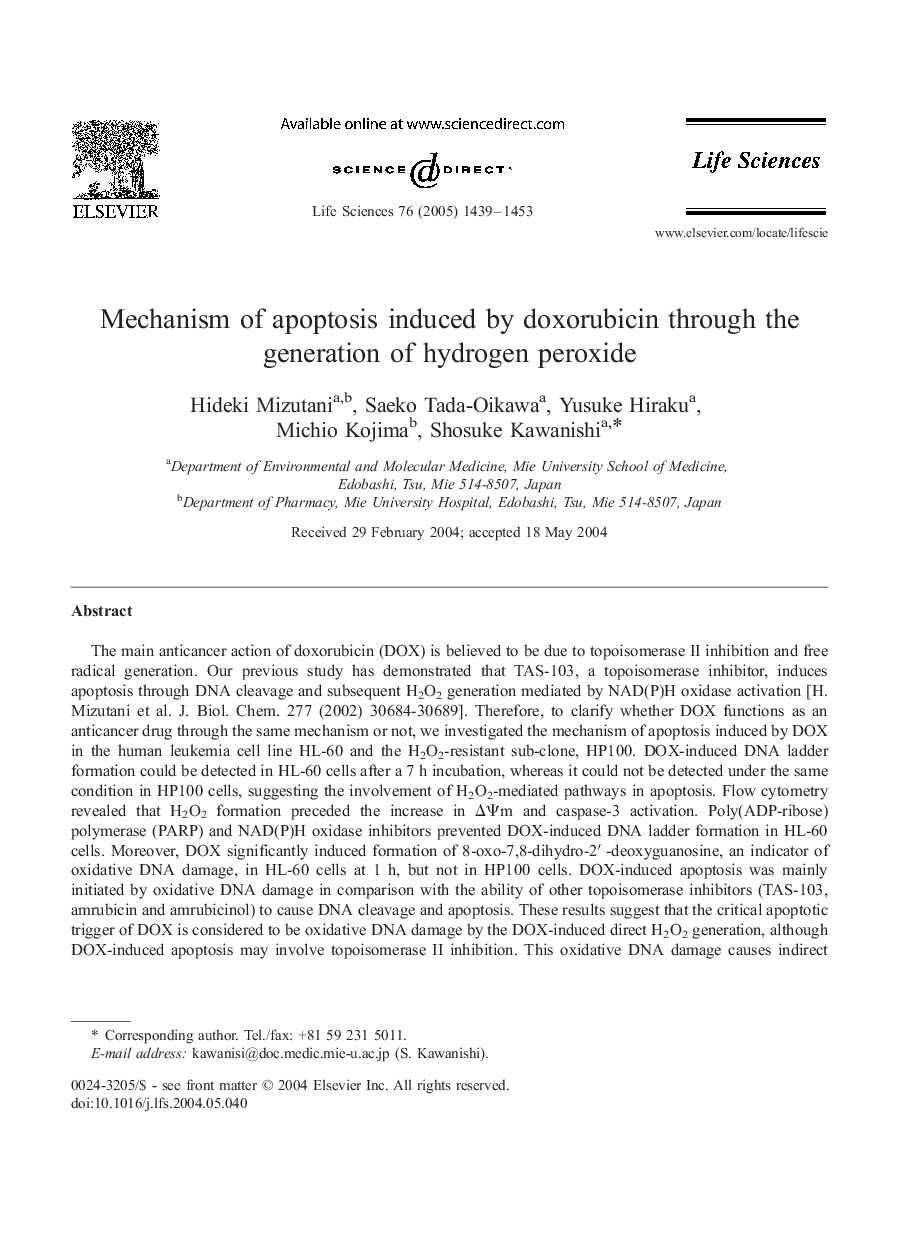| Article ID | Journal | Published Year | Pages | File Type |
|---|---|---|---|---|
| 9012781 | Life Sciences | 2005 | 15 Pages |
Abstract
The main anticancer action of doxorubicin (DOX) is believed to be due to topoisomerase II inhibition and free radical generation. Our previous study has demonstrated that TAS-103, a topoisomerase inhibitor, induces apoptosis through DNA cleavage and subsequent H2O2 generation mediated by NAD(P)H oxidase activation [H. Mizutani et al. J. Biol. Chem. 277 (2002) 30684-30689]. Therefore, to clarify whether DOX functions as an anticancer drug through the same mechanism or not, we investigated the mechanism of apoptosis induced by DOX in the human leukemia cell line HL-60 and the H2O2-resistant sub-clone, HP100. DOX-induced DNA ladder formation could be detected in HL-60 cells after a 7 h incubation, whereas it could not be detected under the same condition in HP100 cells, suggesting the involvement of H2O2-mediated pathways in apoptosis. Flow cytometry revealed that H2O2 formation preceded the increase in ÎΨm and caspase-3 activation. Poly(ADP-ribose) polymerase (PARP) and NAD(P)H oxidase inhibitors prevented DOX-induced DNA ladder formation in HL-60 cells. Moreover, DOX significantly induced formation of 8-oxo-7,8-dihydro-2â²-deoxyguanosine, an indicator of oxidative DNA damage, in HL-60 cells at 1 h, but not in HP100 cells. DOX-induced apoptosis was mainly initiated by oxidative DNA damage in comparison with the ability of other topoisomerase inhibitors (TAS-103, amrubicin and amrubicinol) to cause DNA cleavage and apoptosis. These results suggest that the critical apoptotic trigger of DOX is considered to be oxidative DNA damage by the DOX-induced direct H2O2 generation, although DOX-induced apoptosis may involve topoisomerase II inhibition. This oxidative DNA damage causes indirect H2O2 generation through PARP and NAD(P)H oxidase activation, leading to the ÎΨm increase and subsequent caspase-3 activation in DOX-induced apoptosis.
Keywords
Related Topics
Health Sciences
Medicine and Dentistry
Cardiology and Cardiovascular Medicine
Authors
Hideki Mizutani, Saeko Tada-Oikawa, Yusuke Hiraku, Michio Kojima, Shosuke Kawanishi,
